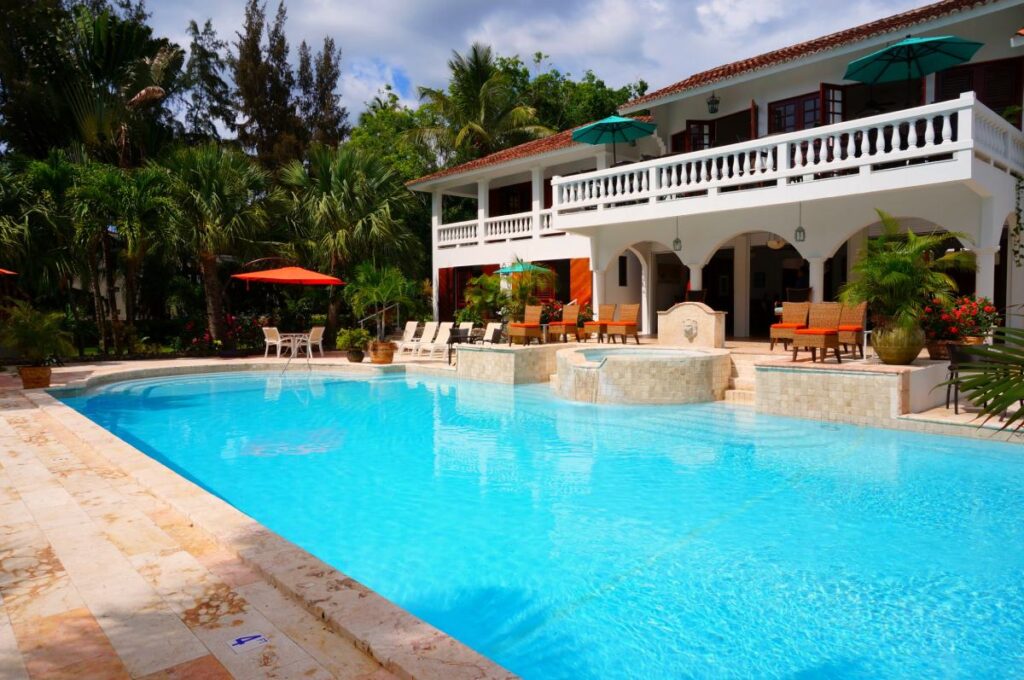Is your pool calling you after a long winter’s rest, tempting you for a swim? Hold off for just a bit to ensure it’s properly cleaned. If it’s been a while since your last pool maintenance check, it’s crucial to have a full cleaning done to prevent any health risks to your family.
Regular usage of the pool accumulates contaminants like chloramines from urine, makeup, sweat, leaves, and algae, making the water increasingly dirty.
Algae growth in unclean swimming pools is not only unsightly but can also pose health risks. Common in pools with leaks or stagnant water, these issues need prompt attention.
Pool leak detection and repair is essential to stop contaminants from compromising your pool’s cleanliness. Remember, jumping into a dirty pool isn’t worth the risk to your health.
Why is Pool Shock Necessary?
Noticed your once-clear pool water turning a murky green? This discoloration often signals algae growth, making the pool unsuitable for swimming. While regular pool service in Boca Raton is vital, it might not suffice to eradicate algae, which can hide in the crevices of pool tiles and other hidden spots.
Algae and phosphates embed themselves in the pool’s finishes, requiring more than just standard cleaning to remove. An acid wash might be needed for a deeper clean. However, for thorough purification and algae elimination, “Pool shock” is your best solution. This process uses potent pool cleaning chemicals designed to deeply cleanse and effectively treat pool phosphates, ensuring your pool is thoroughly clean and safe for swimming.

What Is Pool Shock, and Why Is It Necessary?
Maintaining balanced chemicals in a pool that’s either dirty or has leaks is challenging. For the water to be safe and clean enough for family fun, it must undergo chlorination. But before diving into how long you should wait post-shock treatment before the pool is swim-ready, it’s important to understand the significance of the waiting period.
Why should pool shocking be scheduled periodically?
Periodic pool shocking is crucial for maintaining clean, safe water. Contaminants, if left unchecked, pose serious health risks, and their proliferation needs to be managed. Introducing a “shock” treatment, typically with Chlorine, rebalances the water and eliminates harmful pathogens. Furthermore, regular shocking helps prevent the pool’s sanitation and filtration systems from being overwhelmed by usage, ensuring they function optimally for longer.
Is shocking the pool different from regular cleaning?
Undoubtedly, regular pool cleaning also makes use of Chlorine but the quantity is much lesser. In pool shocking a multiple or amplified amount of the chemical is added to the water to shock the pool. The calculated amount of Chlorine retains chemical balance and kills the algae and germs.
How long after shocking pool can you swim?
Safety is the question here. Do you have to wait for a swim or can you dive into the waters right away after shocking? When can you enjoy the privilege of a clean, relaxing swim after shocking a pool? Swimming is not advisable immediately after shocking the pool!
Swimming guidelines claim that after shocking the pool or treating it with Chlorine, wait for 24 hours before you take a swim. The waters are still not safe. Shocking a pool is a popular way to use a high concentration of Chlorine according to the application and dosage advised by the manufacturer. So, wait for the time to pass by so you don’t accidentally ingest the chemicals.
Before using the pool to swim, you need to be safe. Use a testing kit to detect the presence of Chlorine and the pH balance of the water. If the water is not acidic and Chlorine is within the permissible limits, it indicates that everything is balanced and the water is safe for swimming.
Algae Bloom: The Danger and the Necessity of Pool Shocking
An intense algae bloom within your pool isn’t just unsightly; it poses significant health risks, potentially endangering lives. To combat this, immediate pool shocking is imperative. The severity of the algae bloom and the pool’s condition will determine the required chlorine treatment level. Once introduced, the chemical begins its work, targeting and eliminating algae, contaminants, and harmful microbes effectively.
Following a pool shock, the “safe to swim” period can vary, ranging from 8 to 24 hours, necessitating a reevaluation of the water’s chemical composition. Typically, chlorine levels deemed safe for swimming fall at or below 5 parts per million (PPM). This assessment ensures that the pool not only looks inviting but is also safe for everyone to enjoy.
However, chlorine isn’t the sole option for sanitizing your pool; other effective treatments are available. It’s crucial to consult with a professional pool acid wash service to explore all available sanitizing solutions, ensuring you select the most suitable and safest option for your family’s swimming environment.



